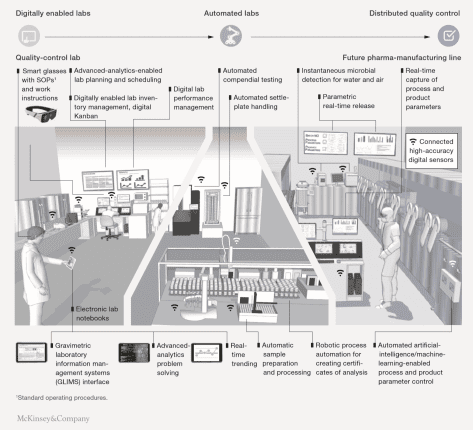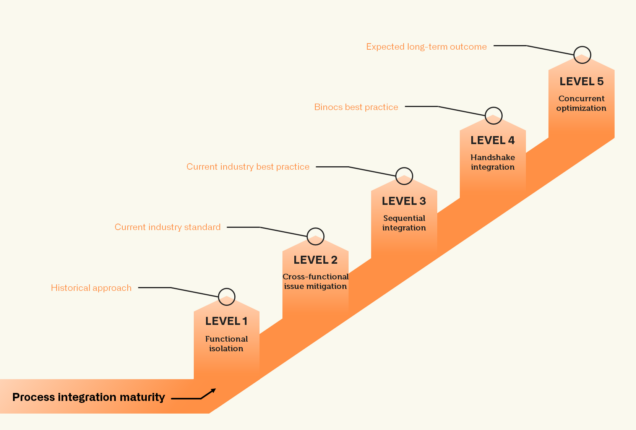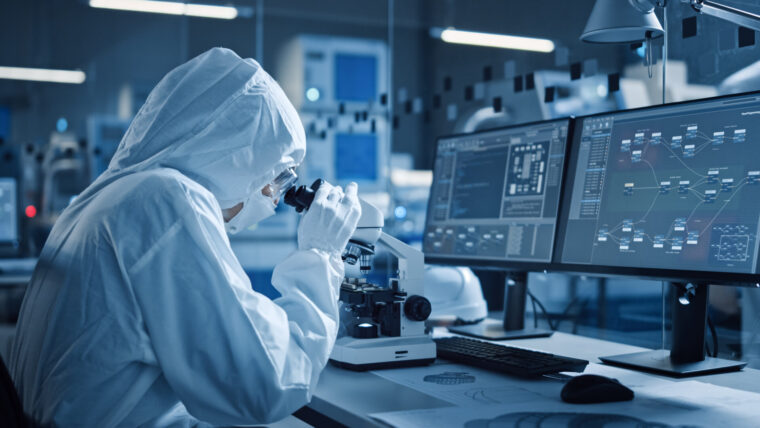
“Industry 5.0” explained in 800 words
It seems we’ve barely started to understand the scope of the Fourth Industrial Revolution and some institutions are already heralding the dawn of the Fifth! So, if your head is spinning from all these revolutions, I thought it would be useful to quickly bring everyone up to speed on what “Industry 5.0” really means.
There have already been 4 Industrial Revolutions?!
Most people have at least heard of “Industry 4.0” at this stage but, before explaining the next step, it’s worth first reflecting on how we got here.
The First Industrial Revolution represented a significant technological leap forward with the introduction of large-scale mechanized manufacturing in late 18th Century Europe, replacing the previous “cottage industry” of handmade goods that had characterized the manufacturing sector for over a millennium.
The next leap forward arrived with the systematic expansion of railway, telegraph and electrification networks in the late 19th Century across those wealthy nations that had already started to industrialize. This paved the way for the development and spread of new ideas, including the proliferation of production lines and greater levels of automation.
Also known as the Digital Revolution, the Third Industrial Revolution established itself in the second half of the 20th Century as existing industry leaders began to harness the power of computers to streamline production lines and replace further sections of the human workforce with automated and robotic processes.
Industry 4.0, or 4IR, is a 21st Century paradigm shift that aims to drive even greater productivity by further fuelling the push towards full automation via ubiquitous interconnectivity and “intelligent” software. Modern data-driven processes that leverage artificial intelligence (AI) and machine learning practices are expected to facilitate predictive planning that streamlines supply chains. Meanwhile, critical manufacturing software and hardware will both become increasingly automated via interconnected systems within the internet of things (IoT). Ultimately, the large-scale robotization of repetitive processes is expected to spread from the factory floor to all areas of manufacturing and commerce.
So how can another revolution be expected so soon?
It should be clear from the above summary that the progress made with each new Revolution has been built on the successes of the previous. The driving motivation for each leap forward has historically been to achieve greater levels of industrial productivity by moving further away from the limitations of human power. That has translated to systematically greater levels of automation, to the point where, due to AI, human involvement in production processes will soon be almost entirely absent. This, in turn, raises concerns about human welfare in an environment with fewer opportunities for low-skilled work.
The logical question, then, is how can “Industry 5.0” possibly represent another great push forward so soon after 4.0 started and with so little of the latter’s potential yet to be realized?
Industry 4.1
In truth, a Fifth Industrial Revolution is not upon us. The term “Industry 5.0” has been coined by the European Commission to highlight Europe’s need for a transition toward sustainable, human-centric and resilient industry in light of the advances already being made as part of 4IR. Crises such as the COVID19 pandemic, economic downturns, high unemployment, and climate change have further underpinned the need to balance the drive for productivity against the well-being of the population and planet.
In brief, the Commission’s goal is to complement the technological and productivity gains being achieved via Industry 4.0 practices with a human-centric approach to the economy, designed to mitigate the welfare fallout experienced with each of the 3 previous revolutions. To do this, they have outlined key initiatives that should be embedded in future European industry in order to place people – not just consumers but also workers – at the centre of new innovations and strategy. These include:
- investing in education programs to up-skill and re-skill workers;
- prioritizing sustainable industries that feed into the circular economy;
- emphasizing green initiatives;
- giving priority to all stakeholders, not just shareholders; and
- challenging the notion that productivity should be prioritized over the welfare of the people who drive the economy.
As such, it can be helpful to think of this new approach as being more like “Industry 4.1”, since it is designed to enhance and improve the Revolution that is already underway (rather than replace it). Overall, I believe that this should be viewed as an important advance and (as with previous initiatives such human rights and data privacy legislation) one that has real potential to be exported out of Europe and to other global regions.
As increased automation is deployed to drive greater efficiency across all stages of supply chains, every sector should be aware of the potential human cost. It’s never too early for employers and managers to start considering strategies for staying ahead of the curve and remaining competitive in an evolving industrial and social environment!



